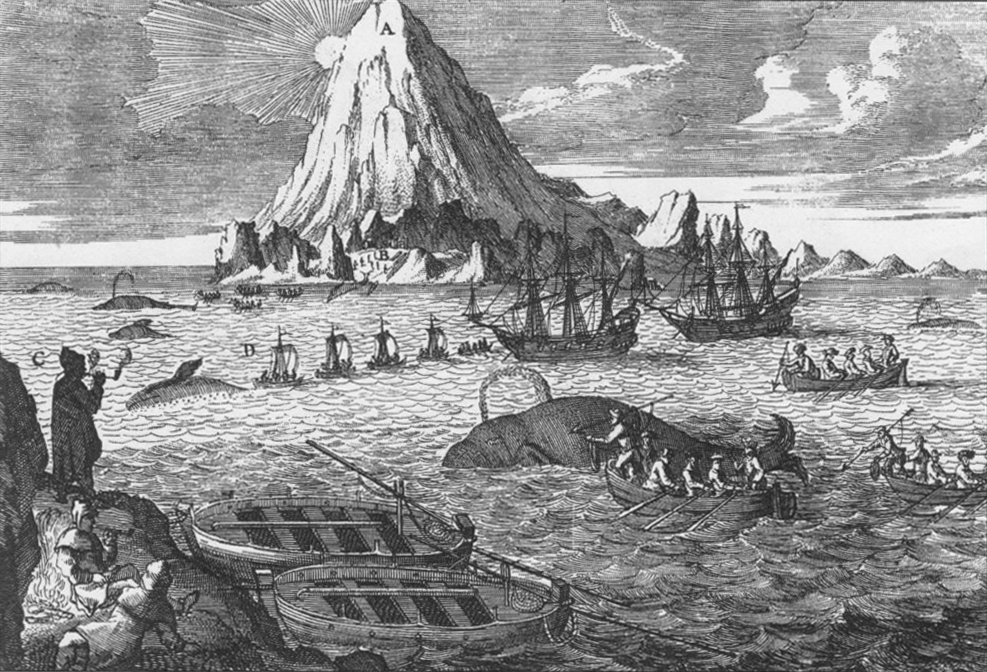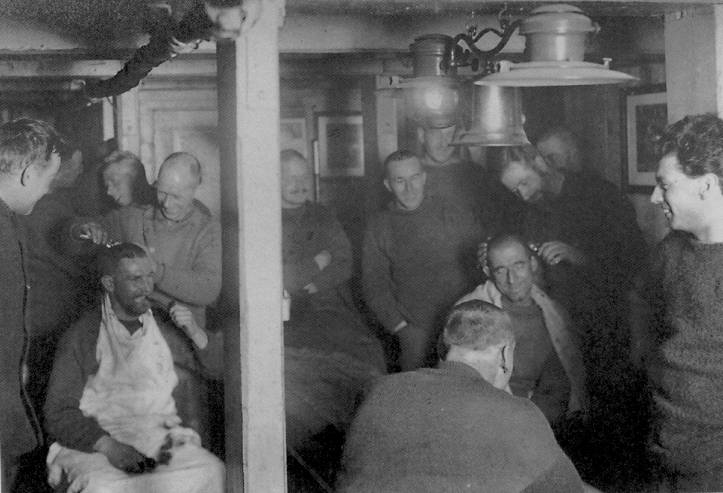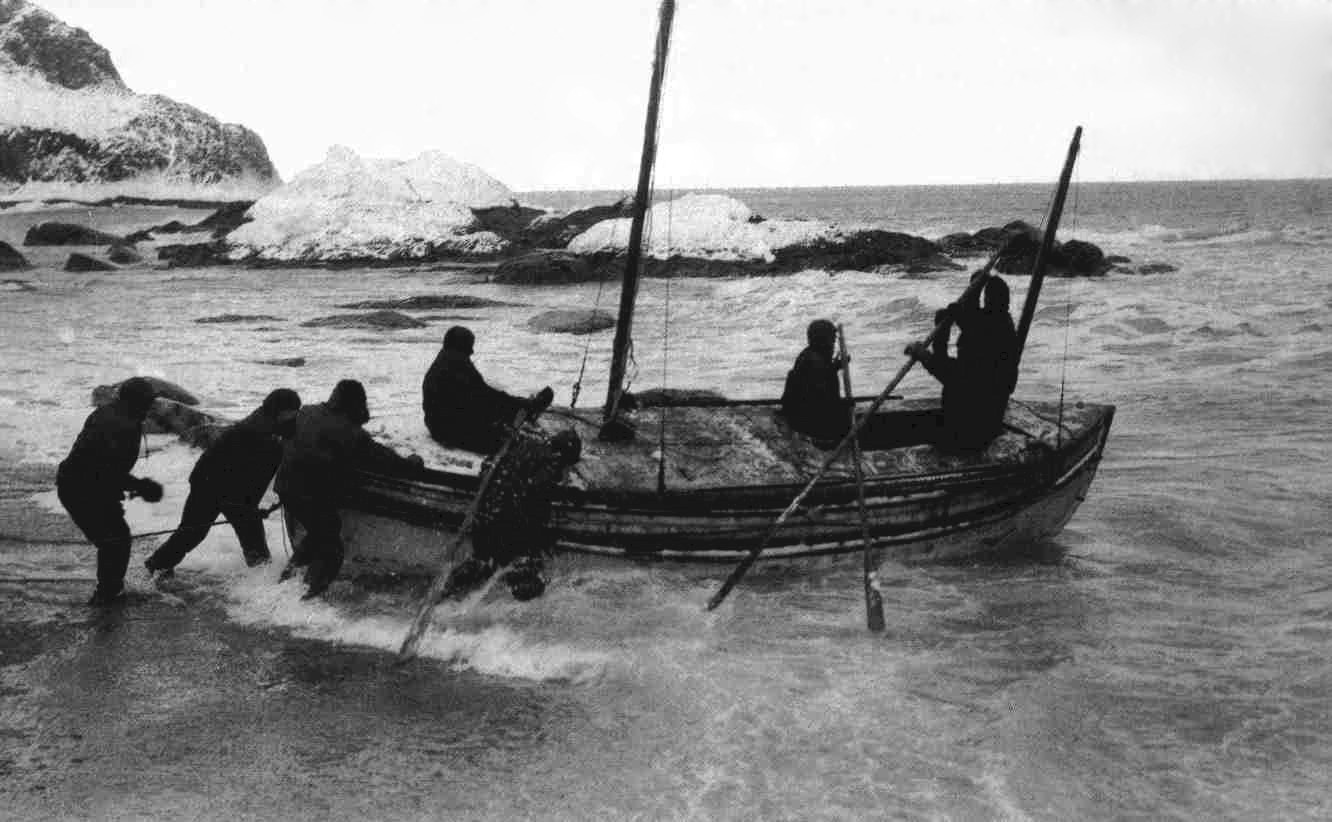|
John Vincent (sailor)
John William Vincent (24 January 1884 – 19 January 1941) was an English seaman and member of Ernest Shackleton's Imperial Trans-Antarctic Expedition. He was one of the five men who accompanied Shackleton on his epic crossing from Elephant Island to South Georgia and was one of only four of the crew of ''Endurance'' not to receive the Polar Medal. Early life Vincent was born in Birmingham on 24 January 1884. He became a sailor at the age of 13 after running away and later became a trawlerman working in the North Sea fleet out of Hull. At the time, trawling was one of the most dangerous of trades, which bred tough men, and Vincent was no exception, in addition, He was a keen amateur boxer and wrestler. Imperial Trans-Antarctic Expedition The Imperial Trans-Antarctic Expedition was organised by Ernest Shackleton as an attempt to be the first expedition to cross the Antarctic continent. Vincent was originally taken on as the bosun, but after a row with Thomas Orde-Lees ... [...More Info...] [...Related Items...] OR: [Wikipedia] [Google] [Baidu] |
Paget Process
The Paget process was an early colour photography process patented in Britain in 1912 by G.S. Whitfield and first marketed by the Paget Prize Plate Company in 1913. A paper-based Paget process was also briefly sold. Both were discontinued in the early 1920s. One of the most outstanding exponents of the Paget process was Australian photographer Frank Hurley. Photography The system used two glass plates, one of which was the colour screen plate while the other was a standard black-and-white negative plate. The colour screen plate comprised a series of red, green and blue filters, laid down in a regular pattern of lines to form a ''réseau'', or matrix. Because the negatives of the time required long exposure times, the colours in the screen plate were diluted to let more light through to the negative, resulting in a quicker exposure. A viewing screen with more intense colour filters was used in combination with the developed positive to project a composite colour image. The co ... [...More Info...] [...Related Items...] OR: [Wikipedia] [Google] [Baidu] |
Thomas Orde-Lees
Major (United Kingdom), Major Thomas Hans Orde-Lees, Order of the British Empire, OBE, Air Force Cross (United Kingdom), AFC (23 May 1877 – 1 December 1958) was a member of Sir Ernest Shackleton's Imperial Trans-Antarctic Expedition of 1914–1917, a pioneer in the field of parachuting, and was one of the first non-Japanese-born men known to have climbed Mount Fuji during the winter. Early life Thomas Hans Orde-Lees was born on 23 May 1877, officially during his parents' holiday in Aachen in what was then Prussia. In fact he was the illegitimate child of Thomas Orde Hastings Lees, a former barrister and the Chief constable of Northampton, and Ada Mary Pattenden (1852–1932), a daughter of the Reverend Canon George Edwin Pattenden, headmaster of Boston Grammar School. Ada was sent off to Thomas' brother's house in Aachen for the birth. The Lees family was well off; they lived in the Northampton Chief Constable's house with a number of servants. Thomas the Elder's wife, G ... [...More Info...] [...Related Items...] OR: [Wikipedia] [Google] [Baidu] |
Alexander Macklin
Alexander Hepburne Macklin (1 September 1889 – 21 March 1967) was a Scottish physician who served as one of the two surgeons on Sir Ernest Shackleton's Imperial Trans-Antarctic Expedition of 1914–1917. In 1921–1922, he joined the Shackleton–Rowett Expedition aboard the . He was also a dog trainer and quartermaster on Shackleton’s expeditions. Early life Alexander Macklin was born on 1 September 1889 in India. When the family returned to Britain Dr Macklin set up practice in the Scilly Isles, where young Macklin became an enthusiastic and proficient boat handler. He went to Plymouth College and then to the University of London. After working for a short amount of time as a deckhand, he continued his education at the Victoria University of Manchester, where he qualified as a surgeon/doctor. Imperial Trans-Antarctic Expedition Soon after qualifying he applied to join Shackleton's expedition and was accepted. As well as his surgeon's duties he was put in charge ... [...More Info...] [...Related Items...] OR: [Wikipedia] [Google] [Baidu] |
Ernest Holness
Albert Ernest Holness (7 December 1892 – 20 September 1924) was an English marine engine stoker. He is best known for his service in the Imperial Trans-Antarctic Expedition of 1914–1916. Biography Holness was born on 7 December 1892 in Kingston-upon-Hull. At age 21 in 1914, he signed articles and shipped aboard the ''Endurance'' as a tender of the coal fire maintained on the vessel. Although the ''Endurance'' was rigged as a barquentine, it also had a coal-burning engine and spent much of its time under steam. Working under the orders issued by chief engineer Lewis Rickinson and second engineer Alexander Kerr, Holness shared the responsibility of physically maintaining the engine fires and stoking them with fresh coal. The exploration ship steamed southward until within 200 miles (320 km) of its destination on the Antarctic coastline. In January 1915, harsh pack ice took the vessel in a grip that would never be loosened. Holness's duties moved from stoker-fireman to s ... [...More Info...] [...Related Items...] OR: [Wikipedia] [Google] [Baidu] |
William Stephenson (sailor)
William Henry Stephenson (19 April 1877 – 20 April 1927) was an English marine engine stoker. He is best known for having been a stoker on the exploration vessel ''Endurance'', on the Imperial Trans-Antarctic Expedition of 1914-1916, led by Sir Ernest Shackleton. Career Before his Antarctic service, it is believed that Stephenson served as a seaman on the fishing trawlers that put out from Hull on the Yorkshire coast to the fishing banks of the North Sea, although he is recorded in the 1911 Census as being a Moulder at the National Radiator Company, at their factory in Hull. Stephenson served as a stoker aboard the Endurance, and after the vessel sank in late 1915, he joined the other members of the ship's crew as a castaway and was rescued in August 1916. Stephenson is one of the lesser-known explorers in Antarctic history. In the words of the ''Endurance'' crew's biographer, John F. Mann, "very little is recorded or known about his life, and of the 28 members of the ''Endur ... [...More Info...] [...Related Items...] OR: [Wikipedia] [Google] [Baidu] |
Tom Crean (explorer)
Thomas Crean (; 16 February 1877 – 27 July 1938) was an Irish Sailor, seaman and Antarctic explorer who was awarded the Albert Medal for Lifesaving (AM). Crean was a member of three major expeditions to Antarctica during the Heroic Age of Antarctic Exploration, including Robert Falcon Scott's 1911–1913 Terra Nova Expedition. This saw the race to reach the South Pole lost to Roald Amundsen and ended in the deaths of Scott and his party. During the expedition, Crean's solo walk across the Ross Ice Shelf to save the life of Edward Evans, 1st Baron Mountevans, Edward Evans led to him receiving the Albert Medal. Crean left the family farm near Annascaul, in County Kerry, to enlist in the Royal Navy at age 16. In 1901, while serving on HMS Ringarooma, ''Ringarooma'' in New Zealand, he volunteered to join Scott's 1901–1904 Discovery Expedition to Antarctica, thus beginning his exploring career. After his experience on the Terra Nova (ship), ''Terra Nova'', Crean's third and f ... [...More Info...] [...Related Items...] OR: [Wikipedia] [Google] [Baidu] |
Frank Worsley
Frank Arthur Worsley (22 February 1872 – 1 February 1943) was a New Zealand sailor and explorer who served on Ernest Shackleton's Imperial Trans-Antarctic Expedition of 1914–1916, as captain of ''Endurance''. He also served in the Royal Navy Reserve during the First World War. Born in Akaroa, New Zealand, Worsley joined the New Zealand Shipping Company in 1888. He served aboard several vessels running trade routes between New Zealand, England and the South Pacific. While on South Pacific service, he was known for his ability to navigate to tiny, remote islands. He joined the Royal Navy Reserve in 1902 and served on HMS ''Swiftsure'' for a year before returning to the Merchant navy. In 1914, he joined the Imperial Trans-Antarctic Expedition, which aimed to cross the Antarctic continent. After the expedition's ship ''Endurance'' was trapped in pack ice and wrecked, he and the rest of the crew sailed three lifeboats to Elephant Island, off the Antarctic Peninsula. From ... [...More Info...] [...Related Items...] OR: [Wikipedia] [Google] [Baidu] |
Timothy McCarthy (sailor)
Timothy McCarthy (15 July 1888 – 16 March 1917) was an Irish leading seaman (LB). He is best known for his service in the Imperial Trans-Antarctic Expedition of 1914–1916, for which he was awarded the Bronze Polar Medal. Biography McCarthy was born on 15 July 1888 in Kinsale, County Cork. He signed on the ''Endurance'' as an able seaman, and participated fully in the dangers and privations of the Weddell Sea, particularly after the ''Endurance'' sank and the ship's company and shore party were marooned on a nearby Drift ice, ice floe. Later, the ship's company and shore party were forced to take to lifeboat (shipboard), lifeboats, and the seamanship of the ABs became a decisive element in the survival of the entire company. Expedition commander Ernest Shackleton was impressed by McCarthy's skill during the survival journey from the northern Weddell Sea to Elephant Island, and so when the expedition leader decided to relaunch the best lifeboat into the open Southern Ocean, ... [...More Info...] [...Related Items...] OR: [Wikipedia] [Google] [Baidu] |
Husvik
Husvik is a former whaling station on the north-central coast of South Georgia Island South Georgia is an island in the Atlantic Ocean, South Atlantic Ocean that is part of the British Overseas Territories, British Overseas Territory of South Georgia and the South Sandwich Islands. It lies around east of the Falkland Islands. .... It was one of three such stations in Stromness Bay, the other two being Stromness and Leith Harbour. Husvik initially began as a floating, offshore factory site in 1907. In 1910, a land station was constructed and remained operational until 1930; business resumed again between 1945 and 1960. Husvik Harbour was also the site of the third introduction of reindeer to South Georgia in 1925. The three whaling stations, Husvik, Stromness, and Leith, were linked by a rough track along the beach. During the whaling era, whalers from Stromness and Husvik would use it to get to Leith Harbour to use the cinema. The track can still be used, but in som ... [...More Info...] [...Related Items...] OR: [Wikipedia] [Google] [Baidu] |
Whaling
Whaling is the hunting of whales for their products such as meat and blubber, which can be turned into a type of oil that was important in the Industrial Revolution. Whaling was practiced as an organized industry as early as 875 AD. By the 16th century, it had become the principal industry in the Basque coastal regions of Spain and France. The whaling industry spread throughout the world and became very profitable in terms of trade and resources. Some regions of the world's oceans, along the animals' migration routes, had a particularly dense whale population and became targets for large concentrations of whaling ships, and the industry continued to grow well into the 20th century. The depletion of some whale species to near extinction led to the banning of whaling in many countries by 1969 and to an international cessation of whaling as an industry in the late 1980s. Archaeological evidence suggests the earliest known forms of whaling date to at least 3000 BC, practiced by the ... [...More Info...] [...Related Items...] OR: [Wikipedia] [Google] [Baidu] |
Harry McNish
Henry McNish (11 September 187424 September 1930), often referred to as Harry McNish or by the nickname Chippy, was the carpenter on Sir Ernest Shackleton's Imperial Trans-Antarctic Expedition of 1914–1917. He was responsible for much of the work that ensured the crew's survival after their ship, the ''Endurance'', was destroyed when it became trapped in pack ice in the Weddell Sea. He modified the small boat, '' James Caird'', that allowed Shackleton and five men (including McNish) to make a voyage of 800 hundred miles across the perilous Southern Ocean to fetch help for the rest of the crew. After the expedition he returned to work in the Merchant Navy and eventually emigrated to New Zealand, where he worked on the docks in Wellington until poor health forced his retirement. He died destitute in the Ohiro Benevolent Home in Wellington. Early life Harry "Chippy" McNish was born in 1874 in the former Lyons Lane near the present site of the library in Port Glasgow, Invercly ... [...More Info...] [...Related Items...] OR: [Wikipedia] [Google] [Baidu] |
James Caird (boat)
The voyage of the ''James Caird'' was a journey of from Elephant Island in the South Shetland Islands through the Southern Ocean to South Georgia Island, South Georgia, undertaken by Sir Ernest Shackleton and five companions to obtain rescue for the main body of the stranded Imperial Trans-Antarctic Expedition of 1914–1917. Many historians regard the voyage of the crew in a ship's boat through the "Furious Fifties" as the greatest small-boat journey ever completed. In October 1915, Sea ice, pack ice in the Weddell Sea had sunk the main expedition ship ''Endurance (1912 ship), Endurance'', leaving Shackleton and his 27 companions adrift on a Drift ice, floe. They drifted northward until April 1916, when the floe on which they were camped broke up; they made their way in the ship's boats to Elephant Island. Shackleton decided to sail one of the boats with a small crew to South Georgia to seek help. It was not the closest human settlement but the only one that did not require ... [...More Info...] [...Related Items...] OR: [Wikipedia] [Google] [Baidu] |




